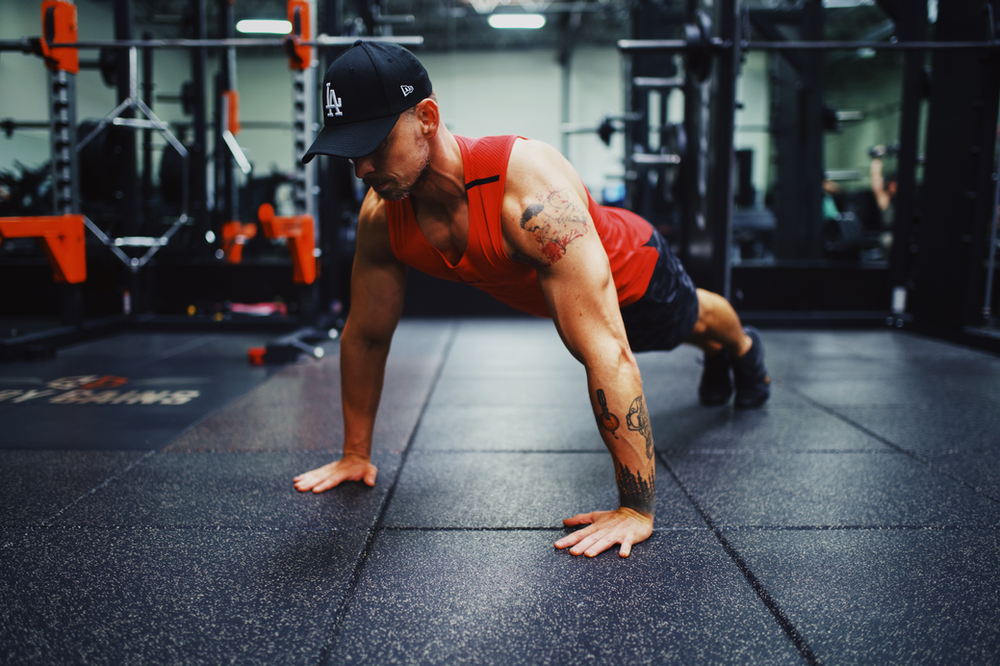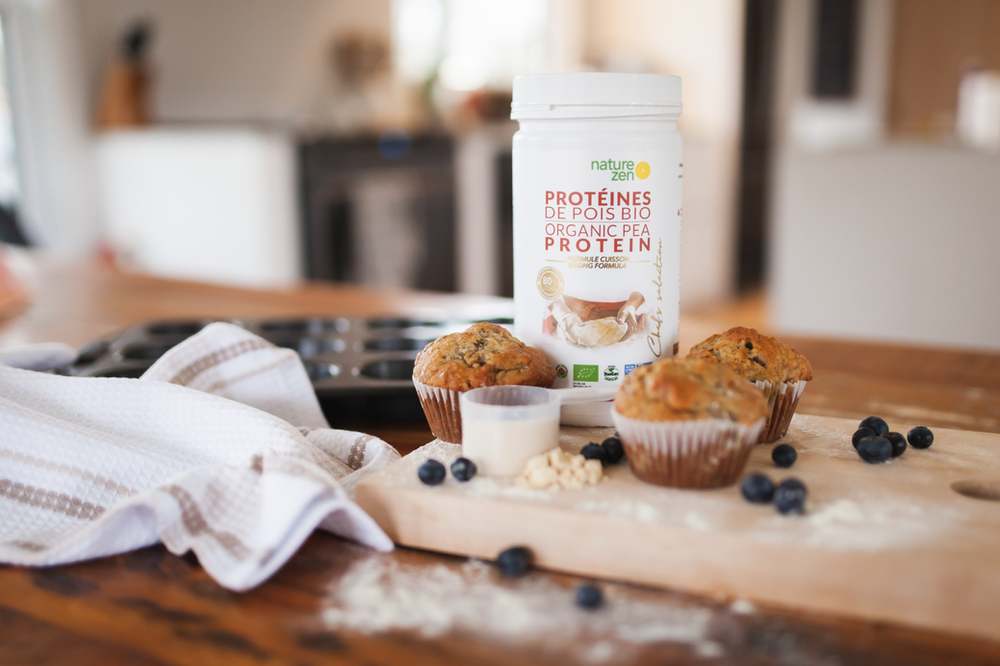Calisthenics and weightlifting are two popular ways people stay fit and build strength. Calisthenics involves using your own body weight for exercises like pull-ups, push-ups, and dips. Weightlifting, on the other hand, uses external weights like dumbbells and barbells for exercises such as squats, deadlifts, and bench press.
Recently, there has been a rise in the popularity of a specific form of calisthenics known as "weighted calisthenics." This involves adding extra weight to your body while doing exercises like pull-ups and dips, taking bodyweight training to the next level.
In this blog post, we'll explore the differences between weighted calisthenics vs weightlifting. Understanding these differences can help you choose the right approach based on your fitness goals and preferences.
Whether you're a beginner or an experienced fitness enthusiast, comparing these two methods will provide valuable insights into how each can contribute to your overall fitness journey.
Weighted Calisthenics
Definition and Explanation
Weighted calisthenics involve augmenting traditional bodyweight exercises like pull-ups, dips, and push-ups by adding extra weight.
While calisthenics typically relies on using your own body weight for resistance, incorporating additional weight challenges your muscles even more, leading to increased strength and muscle development.
Benefits
Improved Body Control and Coordination
Weighted calisthenics necessitate a higher level of body control and coordination.
Balancing the added weight during exercises enhances your overall motor skills and increases awareness of body movements.
This improved coordination can have positive effects not only in your workouts but also in your daily activities.
Functional Strength Gains
The extra resistance in weighted calisthenics translates to functional strength gains. Functional strength, defined as the ability to apply your strength to real-world movements and activities, is significantly enhanced. Weighted calisthenics helps develop a strong and capable body that can perform various tasks with ease.
Minimal Equipment Required
One of the significant advantages of weighted calisthenics is its minimal equipment requirement.
Unlike traditional weightlifting that often involves various gym equipment, you can engage in weighted calisthenics with simple tools like a weight belt, weighted vest, or even a backpack with weights. This makes it a convenient option for those who prefer home workouts or have limited access to gym equipment.
Examples of Weighted Calisthenics Exercises
Weighted Pull-Ups
Integrating weighted pull-ups into your routine increases the resistance, targeting your back, arms, and core muscles more intensely.
This exercise contributes to building upper body strength and enhancing your pulling ability.
Weighted Dips
Weighted dips involve adding resistance while performing the dip exercise. This targets the triceps, chest, and shoulders, providing a comprehensive upper body workout. The added weight challenges your muscles, promoting muscle growth and strength development.
Weighted Push-Ups
In weighted push-ups, you place additional weight on your back or wear a weighted vest while performing the exercise. This intensifies the workload on your chest, shoulders, and triceps, leading to enhanced upper body strength and muscle activation.
By incorporating these weighted calisthenics exercises into your routine, you can take your bodyweight training to the next level, offering a unique and effective approach to building strength and muscle mass.
Whether you're a fitness enthusiast or a beginner, exploring the benefits of weighted calisthenics can significantly impact your overall fitness journey.
Weightlifting
Definition and Explanation
Weightlifting is a structured form of resistance training that involves lifting external weights, such as dumbbells, barbells, or machines.
This training method aims to build strength, increase muscle mass, and enhance overall fitness through targeted exercises.
Weightlifting provides individuals with a systematic approach to strength development, emphasizing specific weight amounts and repetitions.
Benefits
Targeted Muscle Isolation
Weightlifting enables targeted muscle isolation, allowing individuals to focus on specific muscle groups during exercises. This precision is advantageous for developing strength in particular areas and addressing muscle imbalances, contributing to a well-rounded and balanced physique.
Progressive Overload with External Weights
One of the primary benefits of weightlifting is the principle of progressive overload. By gradually increasing the resistance lifted over time, individuals challenge their muscles, promoting adaptation and strength gains. This principle is fundamental for muscle development and overall fitness improvement.
Variety of Training Modalities (e.g., Powerlifting, Olympic Lifting)
Weightlifting offers a diverse range of training modalities, providing flexibility in choosing styles that align with individual fitness goals.
Powerlifting focuses on three key lifts – squat, deadlift, and bench press – emphasizing maximum strength.
Olympic lifting involves dynamic movements like the snatch and clean and jerk, highlighting speed, power, and coordination.
The variety in training modalities ensures engaging and effective workouts.
Examples of Weightlifting Exercises
1. Squats
Squats, a cornerstone weightlifting exercise, target the lower body, engaging muscles such as the quadriceps, hamstrings, and glutes. Proper squat form promotes leg strength, stability, and overall lower body power.
2. Deadlifts
Deadlifts engage multiple muscle groups, including the back, hips, hamstrings, and core.
This compound movement is effective for building overall strength and promoting good posture. Deadlifts are renowned for their effectiveness in developing posterior chain muscles.
3. Bench Press
The bench press, a classic upper body exercise, targets the chest, shoulders, and triceps. This exercise is crucial in powerlifting and aids in building upper body strength and muscle mass.
4.
Muscle Hypertrophy
Weightlifting also promotes muscle hypertrophy, referring to the increase in muscle size. This aspect of weightlifting is beneficial for those seeking aesthetic improvements and enhanced muscular definition.
5. Strength Endurance
Incorporating weightlifting into a fitness routine enhances strength endurance, allowing individuals to sustain effort over extended periods. This is particularly advantageous for activities requiring prolonged strength, such as sports and recreational pursuits.
By incorporating a variety of these weightlifting exercises and considering the associated benefits, individuals can tailor their fitness routines to achieve specific goals, whether it be strength development, muscle hypertrophy, or overall improvement in fitness levels.
Key Differences
Resistance Source
Weighted Calisthenics vs Weightlifting
In weighted calisthenics, the primary source of resistance is the individual's own body weight, augmented by the addition of extra weight.
This approach challenges muscles through controlled movements against the resistance of the body.
In contrast, weightlifting relies on external weights such as dumbbells, barbells, and machines to provide resistance. This allows for precise control over the amount of weight lifted, contributing to progressive overload and strength development.
Skill and Technique
Calisthenics' Emphasis on Body Control
Calisthenics places a strong emphasis on body control, requiring individuals to master movements that engage multiple muscle groups simultaneously.
The focus is on leveraging one's body weight effectively, demanding coordination, balance, and control. Mastery of calisthenic exercises involves refining body movements to optimize muscle engagement and achieve proper form.
Weightlifting's Focus on Form and Technique
Weightlifting prioritizes form and technique to maximize the effectiveness and safety of exercises. Each lift, whether it's a squat, deadlift, or bench press, requires a specific set of movements executed with proper form.
Precision in technique is crucial to avoid injuries and to ensure that the targeted muscles are effectively engaged during each repetition.
Accessibility and Convenience
Minimal Equipment for Calisthenics
Calisthenics is known for its accessibility and minimal equipment requirements.
Many calisthenic exercises can be performed with little to no equipment, making it an ideal choice for those who prefer home workouts or have limited access to a gym.
Basic equipment such as a pull-up bar or parallel bars may enhance the variety of exercises but is not always essential.
Gym Access and Equipment Needed for Weightlifting
Weightlifting often requires access to a gym equipped with barbells, dumbbells, and machines. The nature of external weights necessitates specific equipment for various exercises. While some individuals may prefer the comprehensive options offered by a gym, others may find the need for specialized equipment and gym access less convenient, especially when compared to the simplicity of calisthenics.
Understanding these key differences can guide individuals in choosing the approach that aligns with their fitness goals, preferences, and the resources available to them. Whether prioritizing bodyweight exercises for convenience or opting for the structured approach of weightlifting, each method offers unique benefits and challenges.
Considerations for Choosing: Weighted Calisthenics vs Weightlifting
Fitness Goals
1.St
rength
When choosing between weighted calisthenics and weightlifting, consider your primary fitness goal. If your focus is on building strength, both approaches can be effective, but weightlifting, with its emphasis on progressive overload and controlled external weights, may offer a more structured path to increasing overall strength.
2. Muscle Hypertrophy
Individuals seeking muscle hypertrophy, or an increase in muscle size, may find both weighted calisthenics and weightlifting beneficial.
Weightlifting, with its ability to precisely control resistance, is known for promoting muscle growth. However, weighted calisthenics can also contribute to hypertrophy, especially as additional resistance is added to bodyweight exercises.
3.En
durance
If endurance is a key fitness goal, consider the demands of your chosen activity. Calisthenics, with its focus on bodyweight movements, often involves continuous and dynamic exercises that can enhance muscular endurance. Weightlifting, while valuable for strength and power, may require additional conditioning exercises to target endurance specifically.
Personal Preferences
1. Enjoyment of Bodyweight Exercises
Your enjoyment of exercise plays a crucial role in long-term adherence to a fitness routine.
If you find satisfaction in bodyweight exercises, the dynamic and versatile nature of calisthenics may be appealing. The ability to perform exercises without the need for extensive equipment can make workouts more accessible and enjoyable.
2. Interest in Lifting Heavy Weights
Weightlifting enthusiasts who enjoy the challenge of lifting heavy weights may find satisfaction in the structured and progressive nature of weightlifting programs. The ability to continually increase the resistance allows for measurable progress, making it particularly appealing for those motivated by lifting heavier loads.
Considering these factors will help you align your fitness regimen with your individual preferences and goals.
Whether you prioritize building strength, achieving muscle hypertrophy, or enhancing endurance, understanding how each approach caters to different aspects of fitness will guide you toward the method that best suits your needs.
Additionally, taking personal preferences into account, such as the enjoyment of specific exercises or the desire to lift heavy weights, ensures a more fulfilling and sustainable fitness journey.
Training Programs
Sample Weighted Calisthenics Routine
For individuals looking to embrace the challenges of weighted calisthenics, here's a sample routine that incorporates both bodyweight exercises and additional resistance:
- Warm-up (5-10 minutes):
- Jumping jacks
- Arm circles
- Leg swings
- Weighted Pull-Ups (3 sets x 8 reps):
- Attach a weight belt with a manageable load.
- Perform controlled pull-ups, focusing on full range of motion.
- Weighted Dips (3 sets x 10 reps):
- Utilize parallel bars or dip station with added weight.
- Lower your body with control and push back up.
- Weighted Push-Ups (3 sets x 12 reps):
- Wear a weighted vest or place weights on your back.
- Maintain proper form throughout the exercise.
- Hanging Leg Raises (3 sets x 15 reps):
- Engage your core and lift your legs with added ankle weights.
- Pistol Squats (3 sets x 10 reps per leg):
- Perform single-leg squats, adding resistance as needed.
- Cooldown (5-10 minutes):
- Stretching for major muscle groups.
Adjust the weight and repetitions based on your fitness level and progression. Consistency is key to seeing improvements in strength and muscle development.
Sample Weightlifting Program
For those drawn to the structure and precision of weightlifting, here's a sample program that targets major muscle groups:
- Warm-up (5-10 minutes):
- Cardiovascular activity (e.g., jogging, jumping rope).
- Squats (4 sets x 8-10 reps):
- Focus on proper form, gradually increasing weight.
- Deadlifts (3 sets x 8-10 reps):
- Lift with a straight back, engaging hamstrings and glutes.
- Bench Press (3 sets x 10-12 reps):
- Use a weight that challenges your chest and triceps.
- Overhead Press (3 sets x 8-10 reps):
- Lift weights overhead, targeting shoulders and triceps.
- Bent-Over Rows (3 sets x 10-12 reps):
- Engage your back muscles with controlled rowing movements.
- Bicep Curls (3 sets x 12-15 reps):
- Isolate biceps with controlled curls.
- Tricep Dips (3 sets x 12-15 reps):
- Use parallel bars or a stable surface for tricep engagement.
- Cooldown (5-10 minutes):
- Stretching, focusing on muscles worked during the session.
Adjust the weights and repetitions based on your fitness level and progression. Consistent training and proper form are essential for optimal results in strength and muscle building.
Common Myths and Misconceptions
Addressing Misconceptions about Each Training Method
1. Calisthenics Myth: "Not Effective for Building Strength"
Reality: Weighted calisthenics, when properly executed, can be highly effective for building strength.
The addition of external weight intensifies bodyweight exercises, challenging muscles and promoting strength gains. It's essential to progress gradually and use appropriate resistance to ensure continued improvement.
2. Weightlifting Myth: "Only for Bulking Up"
Reality: Weightlifting is versatile and adaptable to various fitness goals. While it's effective for muscle hypertrophy and strength, weightlifting can also contribute to overall fitness, endurance, and toning.
Adjusting rep ranges and training intensity allows individuals to tailor weightlifting programs to their specific goals.
Highlighting the Potential for Combining Both Approaches
1. Myth: "You Have to Choose Either Calisthenics or Weightlifting"
Reality: There's no need to limit yourself to one training method. Combining calisthenics and weightlifting can provide a well-rounded approach to fitness. Calisthenics enhances body control and functional strength, while weightlifting allows for precise resistance control and targeted muscle engagement.
Integrating both methods offers a diverse and comprehensive training regimen.
2. Myth: "Calisthenics and Weightlifting Don't Complement Each Other"
Reality: These training methods can complement each other effectively. Weighted calisthenics can serve as a valuable accessory to weightlifting by targeting stabilizing muscles and enhancing overall athleticism. Conversely, weightlifting can supplement calisthenics by providing a structured approach to progressive overload, promoting muscle development.
3.Myth: "Ca
listhenics Is Only for Beginners, Weightlifting Is for Advanced Athletes"
Reality: Both calisthenics and weightlifting accommodate individuals of all fitness levels. Beginners can start with foundational bodyweight exercises, gradually progressing to weighted calisthenics. Similarly, weightlifting programs can be tailored to suit beginners, with a focus on proper form and lighter weights initially.
4. Myth: "Weightlifting Requires Expensive Equipment"
Reality: While some weightlifting equipment can be expensive, basic equipment like dumbbells and resistance bands can provide a cost-effective starting point.
Additionally, many bodyweight exercises and calisthenics movements require minimal to no equipment, making both approaches accessible to a wide range of individuals.
By dispelling these myths and recognizing the potential synergy between weighted calisthenics and weightlifting, individuals can make informed choices that align with their fitness goals and preferences. A balanced approach that combines the strengths of both methods can lead to a more holistic and effective fitness journey.
Conclusion
Summarizing the Key Points
In conclusion, the comparison between weighted calisthenics and weightlifting has revealed distinct characteristics, benefits, and considerations for each training method.
Weighted calisthenics leverages bodyweight exercises with added resistance, emphasizing body control, functional strength, and minimal equipment.
On the other hand, weightlifting employs external weights, providing precise control over resistance, targeting muscle isolation, and offering a variety of training modalities.
Choose Based on Your Individual Preferences and Goals
As you embark on your fitness journey, it's crucial to recognize that there is no one-size-fits-all approach. Your choice between weighted calisthenics and weightlifting should align with your unique preferences, fitness goals, and lifestyle.
Whether you are drawn to the dynamic movements of calisthenics or the structured nature of weightlifting, selecting the method that resonates with you ensures a more enjoyable and sustainable fitness routine.
The Importance of Consistency and Dedication in Any Fitness Journey
Regardless of the training method you choose, consistency and dedication are the cornerstones of a successful fitness journey.
Whether you're performing weighted calisthenics in the comfort of your home or lifting weights at the gym, progress takes time and effort. Stay committed to your chosen routine, celebrate small victories, and understand that the journey towards improved strength, endurance, or muscle development is a gradual process.
In conclusion, the path to a healthier and stronger you is uniquely yours.
By making informed choices, embracing variety in your workouts, and staying dedicated to your fitness goals, you pave the way for long-term success.
Whether it's the simplicity of bodyweight movements or the precision of lifting external weights, the key is to find joy in your fitness pursuits and embrace the journey towards a more resilient and empowered version of yourself.
Original Article












